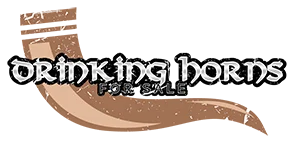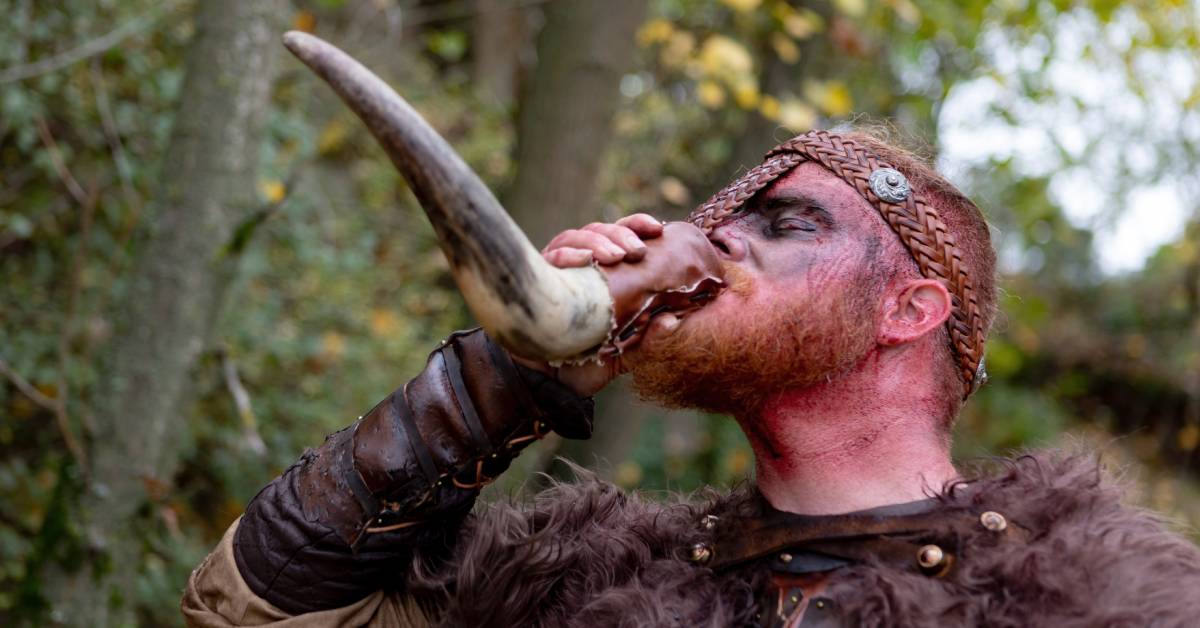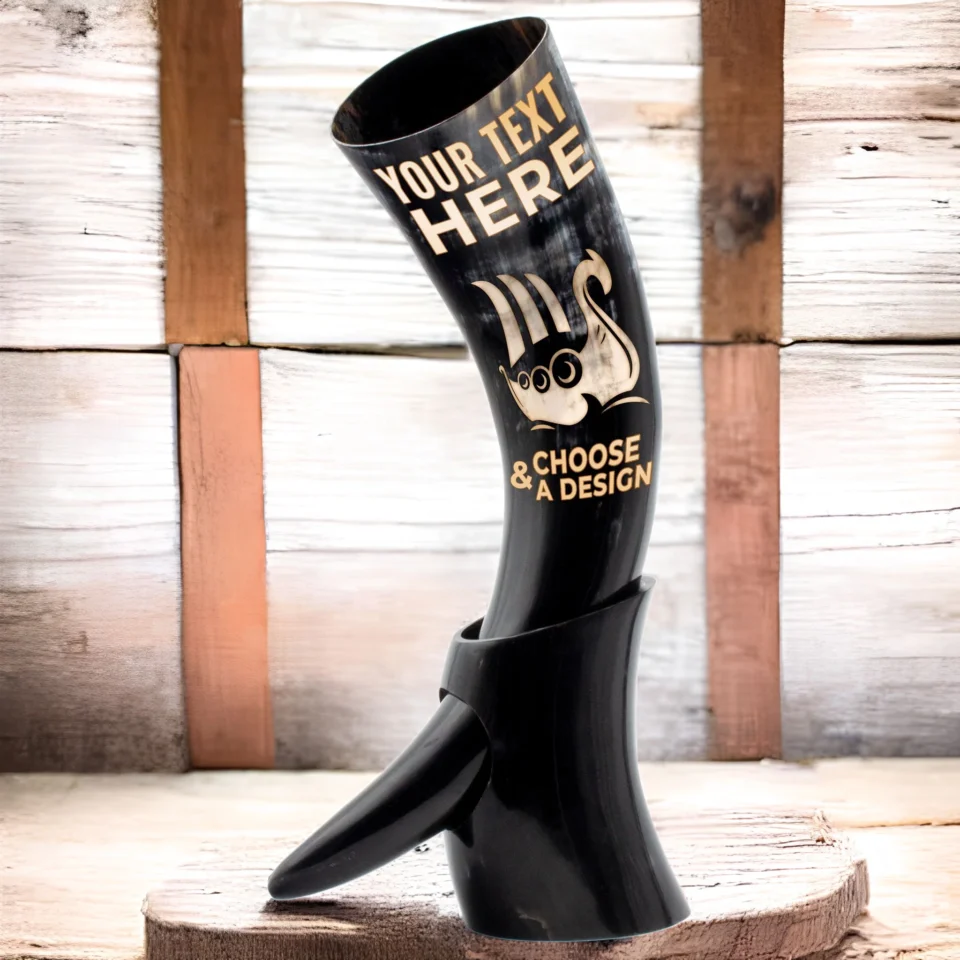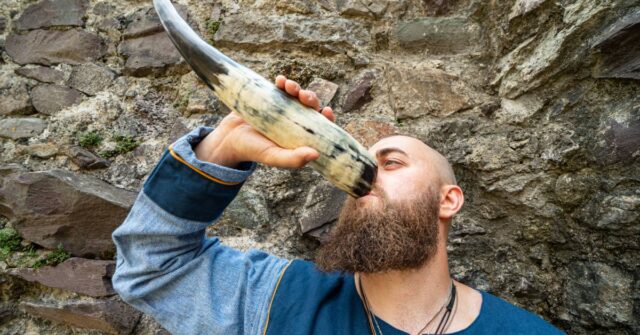Imbued with history and tradition, drinking horns have served as symbols of power and companions of celebration across centuries.
As the art of using these unique drinking vessels re-emerges, we delve into understanding and mastering the techniques involved in pouring into a drinking horn.
This journey will take us through the history, anatomy of the horn, preparation, choice of beverage, pouring technique, and even organizing a drinking horn party.
Understanding the Drinking Horn: A Historical Perspective
The drinking horn holds a unique place in our shared history. Its use and symbolism span cultures and epochs, making it more than just a drinking vessel.
Let’s delve into the past to understand its roots and cultural significance better.
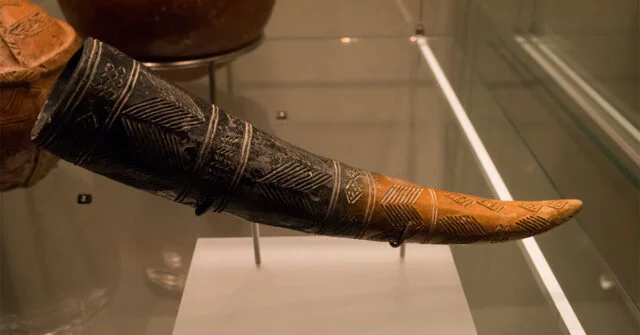
The Origins of the Drinking Horn
The first instances of using drinking horns can be traced back to the Iron Age. Initially, these horns were mere hollowed-out bovine horns, a primitive yet functional version of what they have come to be today.
They quickly found their way into ceremonial functions, asserting power, and celebrating victories.
Historical Significance and Use
The use of drinking horns was not limited to one region or era. From the Vikings in the North, who saw them as a symbol of status and power, to the Celts and Greeks in the South, the horn was a vessel of celebration and ritual.
Over time, it found representation in literature, music, and even religious contexts, further solidifying its place in history.
Drinking Horns in Different Cultures
Drinking horns have been used and adapted by numerous cultures across the globe, each adding its unique touch to the tradition.
While the Scandinavian drinking horn remains the most iconic, Middle Eastern and Eastern European cultures have also integrated drinking horns into their customs and rituals, lending more diversity to its forms and uses.
The Anatomy of a Drinking Horn
Understanding the anatomy of a drinking horn is crucial for mastering the art of pouring into it. This section will explore the different aspects of a drinking horn, including the materials used and the shape variations.

Materials and Designs
Traditionally, drinking horns were made from cattle or buffalo horns, hollowed out, and polished to serve as a drinking vessel.
Nowadays, you can find horns made from a variety of materials, including synthetics. The designs can range from simple, unadorned pieces to elaborate works of art with intricate engravings or metalwork.
Size and Shape Variations
The size and shape of a drinking horn can significantly affect the pouring and drinking experience. From compact, handheld horns to massive ceremonial pieces, the range is extensive.
The shape, too, can vary, with some horns retaining their natural curve and others being molded into more user-friendly forms.
Preparing Your Drinking Horn for Use
Like any other utensil, a drinking horn requires certain preparations before use. From cleaning to proper storage, these steps help maintain the horn’s quality and longevity.
Cleaning and Conditioning
The initial cleaning of a drinking horn is critical. You’ll need to rinse the inside with warm water and mild soap, ensuring to thoroughly clean any residual material from the crafting process.
Conditioning with a suitable food-grade oil can help maintain the interior surface and prevent unwanted flavors in your beverage.
Proper Storage and Maintenance
Storing your drinking horn properly when not in use can help preserve its condition. It’s best to keep it in a cool, dry place away from direct sunlight.
Regular maintenance, including cleaning and reconditioning as needed, is essential to keep your horn in prime drinking condition.
Choosing the Right Beverage for Your Horn
While the choice of beverage ultimately depends on your personal preference, some traditional and modern considerations can enhance your drinking horn experience.

Traditional Beverages
Traditionally, drinking horns were used for alcoholic beverages like mead, beer, or wine. These drinks often have the right consistency and flavors that pair well with the natural material of the horn.
Modern Beverage Considerations
In modern times, the use of drinking horns isn’t limited to alcoholic beverages. Non-alcoholic options like juices, non-alcoholic beers or wines, or even soft drinks can also be enjoyed from a horn.
However, it’s essential to consider that acidic drinks might interact with the horn material, affecting the taste.
The Art of Pouring: A Step-by-Step Guide
Now that we’ve prepared our horn and chosen our beverage let’s explore the art of pouring, which involves the right holding technique, understanding the pour’s angle and speed, and adjustments for different beverage viscosities.
Proper Holding Techniques
Holding the drinking horn correctly is crucial for a successful pour. Ideally, one should hold the horn towards the wider end, leaving enough space for the liquid to flow into the horn.
The grip should be firm, but not too tight to allow for subtle adjustments during the pour.
Angle and Speed: The Keys to a Perfect Pour
The angle at which you hold your horn and the speed at which you pour your beverage significantly influence the pouring process.
A gentle angle allows for a smoother pour, preventing the liquid from spilling. Similarly, a slow and steady pour can help manage the liquid flow better, especially for beginners.

Understanding Pouring Adjustments for Different Beverage Viscosities
Different beverages have different viscosities, which can affect the pouring process. For thicker beverages like mead or certain ales, a steeper angle and faster pour may be necessary.
On the other hand, lighter beverages like wine or cider can be poured at a gentler angle and slower speed.
Drinking from a Horn: The Do’s and Don’ts
Drinking from a horn is a unique experience, quite different from drinking from a regular glass or cup. Here we will discuss the techniques for handling the horn and the etiquette involved.
Handling the Horn While Drinking
When drinking from the horn, it’s important to maintain a firm grip. Remember to tilt the horn slowly to control the flow of the beverage. As the liquid decreases, you’ll need to tilt the horn more.
Drinking Etiquette
Drinking etiquette can vary based on the cultural context, but common practices include not setting the horn down until it’s empty and refraining from greedy gulps.
Participating in toasts and drinking songs can also enhance the shared experience of using drinking horns.
Advanced Techniques and Tricks
Once you’ve mastered the basics, you can explore advanced techniques and tricks for pouring and drinking. These can add a touch of flair and fun to your drinking horn experience.
Tricks for Smooth Pouring
Advanced pouring techniques may include pouring from a height for aeration or using a splash pour for thicker beverages. Remember, these techniques require practice, and it’s normal to have a few spills along the way.
Flair Techniques: Beyond the Basics
Flair techniques involve more elaborate maneuvers like pouring into multiple horns at once or incorporating other elements like fire.
These are strictly for experienced users and should be done with caution and adequate safety measures.
Organizing a Drinking Horn Party
What better way to celebrate the mastery of the drinking horn than by throwing a party? Here, we’ll discuss ideas for themes and decorations, introduce the pouring ritual to guests, and ensure everyone’s safety.
Thematic Ideas and Decorations
A Viking-themed party is a popular choice for a drinking horn party. You can decorate the venue with rustic elements, faux fur, and traditional Viking symbols.
Remember, the star of the show is the drinking horn, so make sure everyone has one.
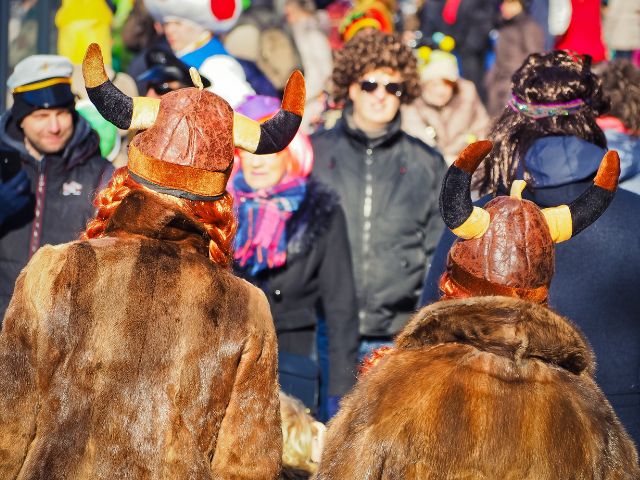
Introducing the Pouring Ritual to Guests
Before the festivities begin, take some time to educate your guests on the proper way to pour and drink from a horn. This can be a fun activity, and it ensures everyone gets the most out of their drinking horn experience.
Safety Tips and Responsible Drinking
While a drinking horn party can be a lot of fun, it’s important to remember the principles of responsible drinking. Ensure there are non-alcoholic options available, and remind guests to drink at their own pace.
Finally, arranging designated drivers or accommodations for guests who have had too much to drink can ensure everyone’s safety.
Conclusion: The Beauty of Tradition
The tradition of using drinking horns is a beautiful blend of history, culture, and shared experiences.
Learning to pour into a drinking horn is not just mastering a skill, but also connecting with a timeless ritual that bridges the past and the present. So here’s to the beauty of tradition, and happy pouring!
